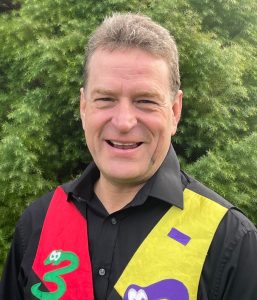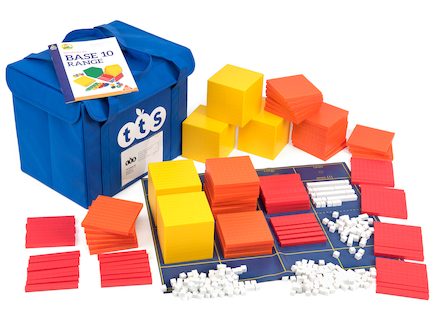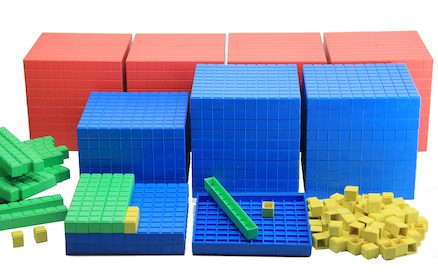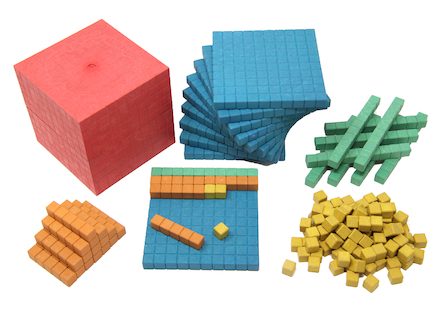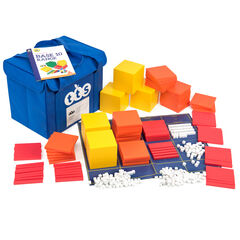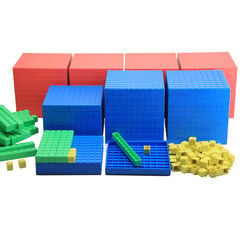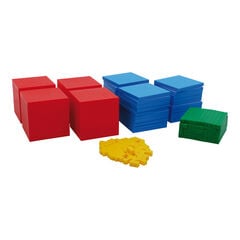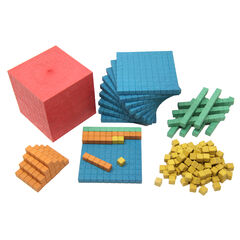Hi, my name is Dave Godfrey. I’m a teacher and an independent primary mathematics consultant from York, and I’m passionate about the use of concrete resources.
The focus of this blog and its accompanying video is on the use of Base 10 equipment.
The origins of the Base 10 Materials
With the arrival of the mastery approach in recent years, teachers have been rediscovering and reinforcing their use of Base 10 equipment. I know for some of my teaching career the Base 10 material remained hidden in the cupboard. Not anymore!
The Base 10 materials are sometimes called Dienes because they were first created and used by the 20th century Hungarian mathematician and theorist Zoltan Dienes. Dienes trained as a mathematician in England and spent much of his adult life in France. His theory was that by using manipulative materials, games and stories, children can learn more complicated mathematics at a younger age than had previously been thought. His work is one of the main foundations for the CPA approach we use in school today.
Exploring Base 10 Equipment
There are four separate pieces found within the Base 10 materials. The Ones are sometimes called units – they are 1cm cubes. The ten pieces are sometimes called rods. The hundred pieces are called flats and the thousand pieces called cubes.
When Zoltan Dienes presented children with this equipment, he encouraged them to play and to discover. Within their play, they would discover that 10 units made one rod. 10 rods made a flat and therefore 100 units were equivalent to a flat.
Today we have Base 10 materials made from different resources. Dienes’ originals were made of wood, but we typically see versions made of plastic in school today. In the video I do recommend a wooden set made from sustainable wood sources which stood out to me when comparing the sets. Some of the plastic sets are interlocking, which are also very attractive.
Base 10 and a Hundred Square
Hundred squares are helpful representations of number. They are typically somewhat abstract in nature, as they contain the symbolic representation of each number. In the video I model one use of Base 10 equipment to explore the relationship between two numbers on a hundred square.
I also use a 1-120 Number Grid that I created a few years ago. This is an A1, double-sided, laminated poster which includes Base 10 imagery as well as the abstract symbols for each number. This has proved to be a very powerful tool within school. They are available from numberfun.com.
Papa Titioning – Place Value and Calculation in Story
Zoltan Dienes believed in using games, songs and dance in learning math to make it more fun for children. I wonder what Zoltan Dienes would make of Papa Titioning!
Papa Titioning is one of my Number Fun characters. He is a lumberjack and organises his logs to represent our Base 10 number system. Papa Titioning’s original song explored the partitioning of a 2-digit number into different combinations of 10s and 1s. Papa Titioning now provides a story context for the exploration of place value from thousandths through to millions. He also helps children explore formal strategies for calculation. Towards the end of the video, I’ve modelled how I use Papa Titioning’s story, a place value grid, an image of Papa Titioning’s truck and Base 10 materials to help children develop deep understanding of column subtraction.
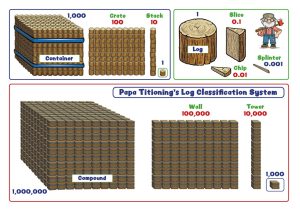
Modelling Mental Strategies using Base 10
One of my favourite uses of Base 10 equipment is to model different mental strategies. If I represent, for example, 76 in Base 10, I can demonstrate the Round and Adjust strategy of adding 19 by adding 2 tens and then subtracting 1 one.
Your use of Base 10 in school
Dienes is a vital piece of mathematical equipment. It fits perfectly with the CPA (Concrete, Pictorial and Abstract) approach within the teaching of mathematical mastery. There are many ideas we’ve not touched on in this blog, including the idea of using the ‘cube’ as ‘1’ with the ‘unit’ therefore representing a thousandth, and a rod being a hundredth.
Base 10 has some limitations. We can’t, for example, use it to represent 12,345.67 – we need place value counters for this. It does, however, show the cardinality of number brilliantly and provides a powerful tool for helping children develop deep understanding in both place value and calculation.
How effective are you finding the use of Base 10 in your school?
Please do share how you’re creatively using Base 10 with your children – I’d love to know!
With many thanks to Dave Godfrey for writing this blog for us.
Dave is an experienced primary teacher, mathematics consultant and trainer from York. He is also an author, songwriter and NCETM Professional Development Lead for the National Curriculum. Dave is passionate about equipping teachers to teach mathematics with deep understanding, clarity, enjoyment and creativity.
He is best known as the creator of the Number Fun. The Number Fun Portal gives access to over 350 videos that feature a unique combination of visualisation, animation, story, song and humour. (numberfunportal.com). Many of these videos, with their accompanying creative resources, include the representation of the concrete resources explored in these videos.
He travels widely across England to train and equip teachers, and to present his fun-filled and equipping Number Fun Days. Dave has many years’ experience of training teachers in the use of the CPA (Concrete, Pictorial and Abstract approach) and he would be delighted to support you and your colleagues in developing their use within school.
- numberfun.com
- youtube/c/numberfun
- dave@numberfun.com
- @NumberFunDave
